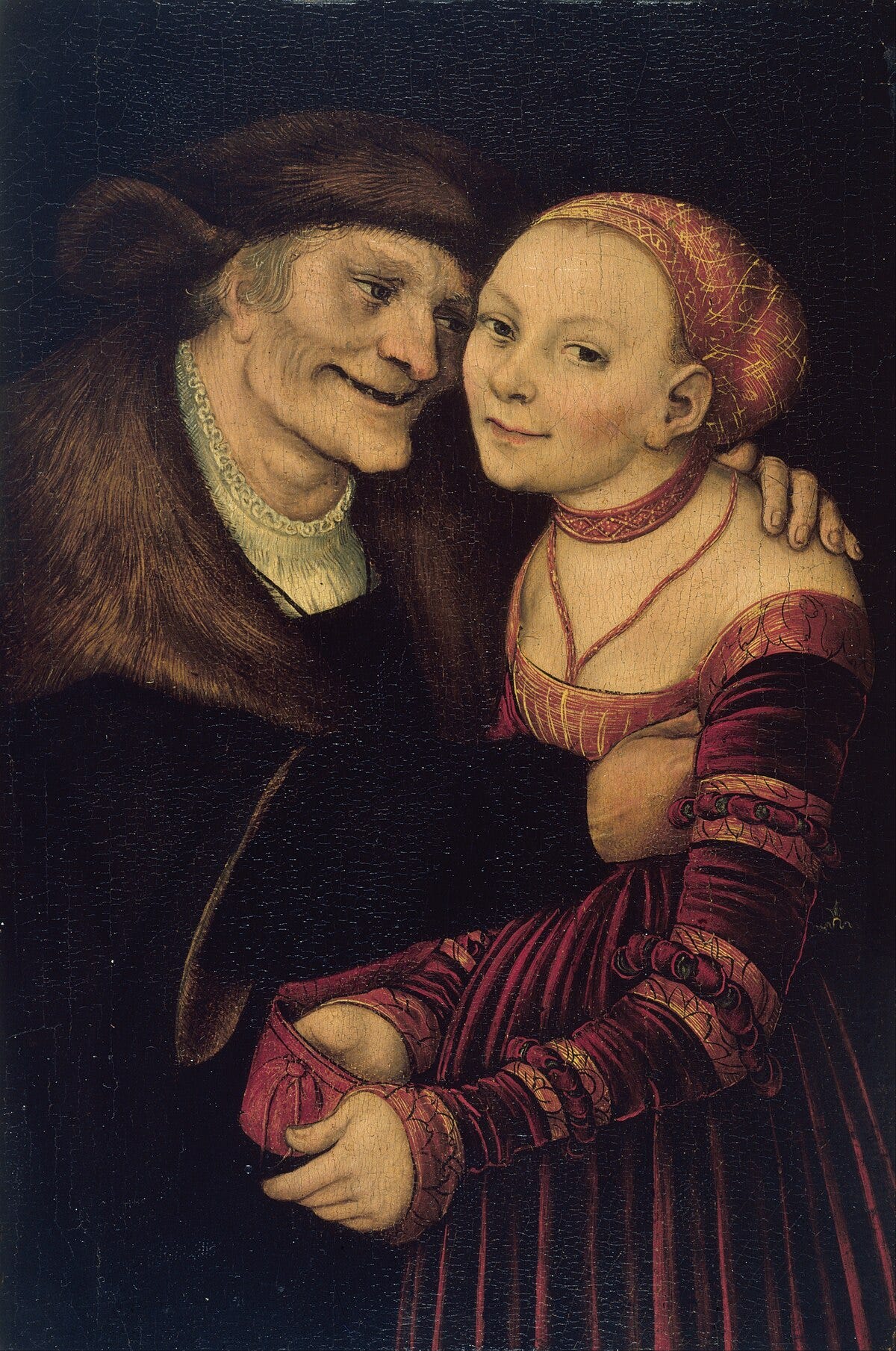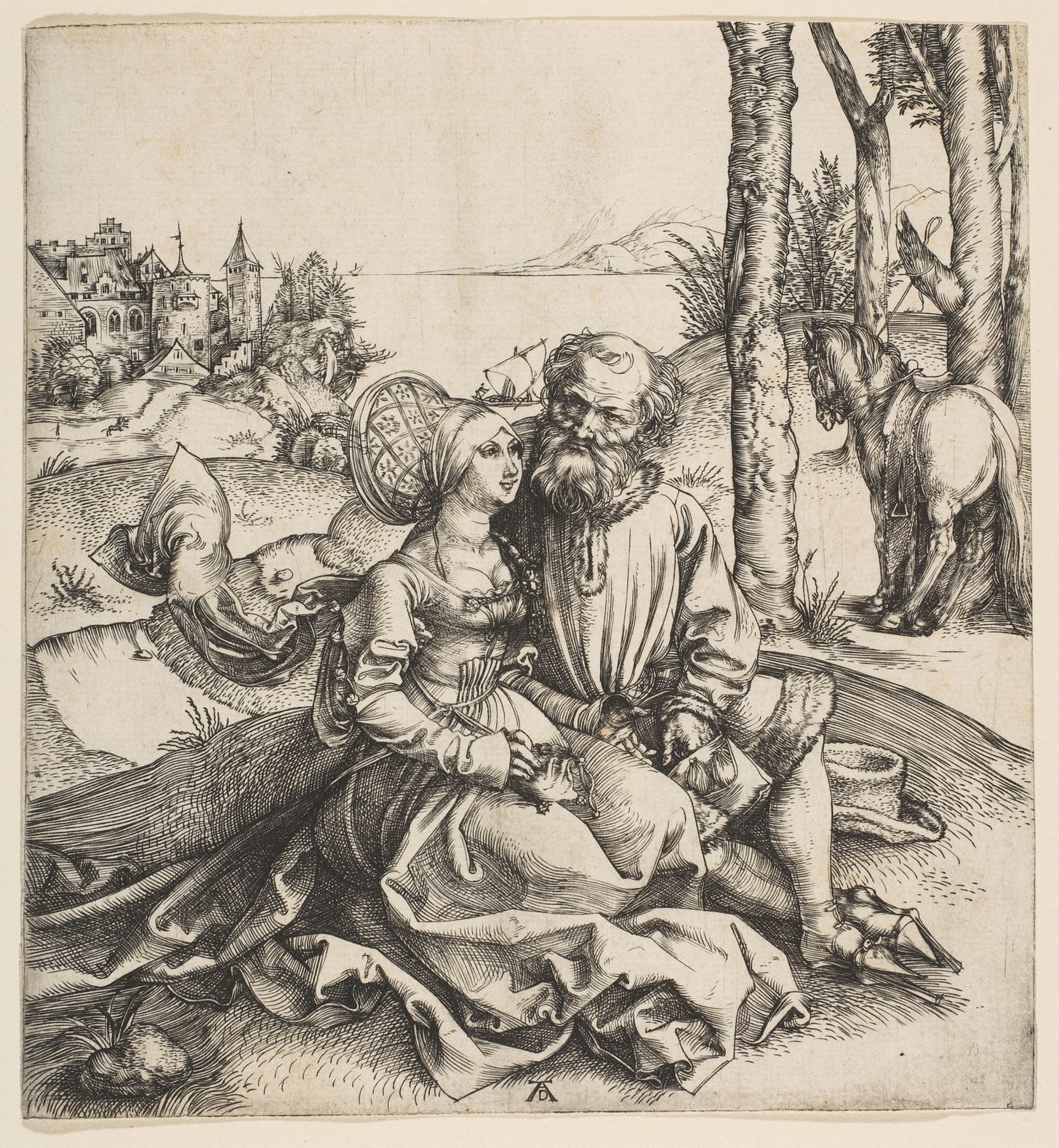The Ill-Matched Couple - Lucas Cranach the Elder
Love may not be the only goal of relationships.
The ill-matched couple was a popular theme of the Northern Renaissance, particularly represented by artists like Lucas Cranach the Elder and Quentin Matsys. These works were influenced by drawings of renowned artists such as Leonardo da Vinci or Albrecht Dürer, demonstrating the widespread interest in this moralizing theme and the Italian influence over some of the most influential painters of Flanders and Germany.
The first oil painting made by Cranach the Elder (1472 - 1553) on this topic is a magnificent summary of what this subject is about:
A young woman - or at least a younger-than-the-man girl, is robbing a foolish old man lured by her youth and beauty. She has most of the beauty attributes of the time: a high forehead, thin lips, and pale skin. The exaggerated physical features emphasize the disparity in age and attractiveness of the two “lovers”.
A sensation of discomfort emerges from the painting. The close-up view prevents us from finding some comfort in a background or a landscape element that would distract us from the scene. It also amplifies the contrast between the two characters. We are somehow force to look at the hideous man, with his missing teeth, predatory gaze, and fur coat bring him closer to an animal condition.
The hand of the man, grabbing the breast of the lady, looks like a wrongful action because of the difference in age and appearance. But it only echoes to the lady’s hand reaching for the purse of the old man, caught in the act of stealing his money.
Yet, both have a smile on their faces, as if they each benefit from this infamous exchange. The man is looking at the woman, happy to have her; the woman is looking at us, as if she knows that we are witnessing the scene and understanding why she is with such a disgusting man.
All these elements - the smiles, the caricatural differences, the role of the hands - have been retained in other versions of this scene. Flemish Quentin Matsys (1466 - 1530), however, added a third character: a jester, accomplice of the woman, to mock the foolishness of the old man and leave no doubt about the girl’s intentions.
The moral message is clear in a painting world still dominated by religious themes: be aware of the dangers of lust or greed, two of the seven deadly sins. But the painting can also be seen as a testimony of the weakness of the men, or the power of women, able to match men when they use other strategies than pure strength. It should be seen as a precursor of modern caricatures, which appeared along with the development of printing.
Lucas Cranach the Elder painted a more subtle work on this topic later, with a larger plan including a landscape, reducing the feeling of discomfort. Yet the many elements in the background suggest the wealth of the old man, which does not mislead us about the true nature of the relationship, though the infamous exchange being less obvious.
The latter painting has a lot of common with some of the initial drawings made on the subject, like the one below made by Albrecht Dürer at the end of the 15th century, proving how deeply Cranach the Elder and Matsys captured the essence of the topic with a tighter framing.








